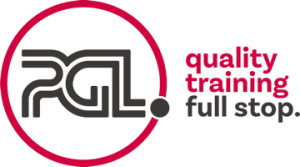What Is Neurodiversity and Why Should Anyone in Construction Bother Learning About It?
1: “Workers in construction are at some of the highest risk of suicide in the country, with rates in the industry over three times higher than the national average. In 2021, 507 construction workers died by suicide which equates to an average of two workers taking their own life every working day.”
2: In 2023 the National Federation of builders (NFB) and the Construction Industry Training Board (CITB) commissioned a report into neurodiversity in the construction industry.
Whilst there is not currently any research making a direct link between these two facts, it is known that Autistic individuals are 9x more likely to die by suicide than neurotypical people so it’s clear that this is an area that organisations and the wider industry can’t ignore.
Whilst the majority of people that disclosed their condition reported receiving reasonable adjustments and additional support, and 76% described positive interactions with their colleagues, the report states that 36% have not disclosed their neurodivergence with concerns about stigma and prejudice being the main barrier and 38% believe that there is not much empathy for neurodivergent workers in the industry.
So what is Neurodiversity?
Neurodiversity is a term coined in the late 1990s by Judy Singer, Australian sociologist, used to describe ALL types of brains. As with biodiversity, (the planet needs different insects, plants and wildlife to flourish), the human race also needs a variety of thinkers to bring different perspectives to problem solving and growth.
The neurodivergent, (those who think and process differently to the majority), have brain differences including Autism, ADHD (attention Deficit Hyperactivity Disorder), Dyslexia, Dyspraxia, Dysgraphia, Dyscalculia and Tourette’s.
These differences all have strengths and challenges as with any person, but as most people are not aware, these differences can be misunderstood, and behaviours can be misinterpreted.
So what can you do about it?
The number one recommendation from the NFB report is to increase awareness for everyone, not just leaders and HR people. For everyone to have a basic understanding of the strengths and challenges faced by people that process differently so that there can be better understanding of how to work with, recruit, retain, motivate, and support different neurotypes.
Let’s compare this to left handedness (which is also a brain difference)
89% of the population are right-handed. Our doors, buttons, zips, desks, scissors, and many tools are designed for people with a dominant right hand. 11% of the population have to fit in with the majority. No one says they can’t performance manage a person because they’re left-handed or if they ask for a pair of left-handed scissors no-one gets upset or thinks they’re weird. That’s because most of us are aware of left-handedness.
When everyone has a basic understanding of the variety of neurotypes, and how they think, feel and process differently, then there will no longer be a problem and we might just make a significant difference to a lot of people’s lives.
At PGL we are pleased to announce our partnership with Momentum Training and Development Ltd, lead trainers for the Thrive Neurodiversity in the workplace programs. Thrive have developed 3 levels of training created by and delivered by neurodivergent people to increase awareness, develop champions, and help managers get the best from all neurotypes. Our courses are CPD accredited and come with additional resources to help support people after the session.
Please contact us for information about how we can help you to further develop a fully inclusive workplace. By increasing awareness we can remove the stigma and make it possible for everyone to be at their best and thrive.
Referenced:
